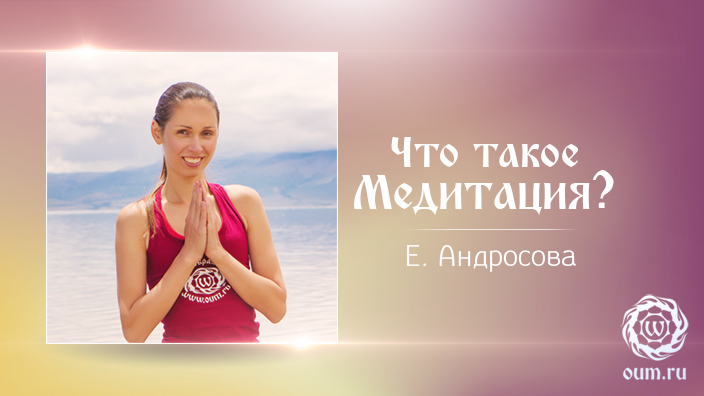MMindfulness meditation, or mindfulness meditation, is gaining more and more popularity among yoga practitioners. However, few people know what is behind this fashionable name. In this article we will talk about the technique of mindfulness meditation, try to give an answer to what mindfulness meditation is and how it differs from classical meditation.
Let’s start our story with the fact that not all those who promote mindfulness meditation present this technique as described below. But this is more an exception that proves the rule.
In simple terms, mindfulness meditation is some kind of a squeeze of meditation techniques taken, as a rule, from the teachings of the Buddha and other authentic spiritual traditions. They usually have a quick effect on those who use them. However, not everything is as simple as it seems at first glance. After all, the main question remains open – should these techniques lead to this effect?
We can give such a vivid example, showing what is the difference between mindfulness and a full-fledged technique of meditation, as a system of holistic development and transformation of a person. This is an example of the approach to human healing in Western and Eastern cultures. In Western culture, when a person falls ill, he is offered, without changing anything in his lifestyle, which is called “staying with his friends,” take a pill, and he will feel better, the disease will pass. Those. he is offered some very superficial approach to the question of his health with the same superficial result.
By and large, a superficial approach to life is a big problem in modern society as a whole. For the rhythm of life does not allow most people to think out and analyze the incoming information in order to draw conclusions.
So, returning to the goals of mindfulness meditation, consider our patient as an example. Instead of removing the causes of the disease, he is offered to remove the symptoms. In other words, to drive the causes of the disease even deeper, aggravating the situation, although now he is much better. But as they say, without removing the root, the weed will still germinate. All modern medicine and pharmacology are built on this principle, which has turned from a health care system and care for a person into a business with all the ensuing consequences.
A completely different approach to the issue is used in oriental medicine and culture. They use the approach that everything external originates from within, including our health. If the human body is healthy from the inside, then what kind of diseases, in principle, can we talk about. In this approach, the patient is offered treatment only if he agrees to change the lifestyle that led him to this problem, i.e. remove the causes of the disease, because otherwise there is no special point in treatment. After a while, everything will return to normal.
The same Western approach has now begun to be used in meditation. By transforming meditation from a deep process of knowing oneself and transforming the personality, changing the work of consciousness and expanding it, getting rid of the causes of suffering and destructive programs into a process similar to therapeutic self-help. And this process is focused only on the fact that, like modern pharmacology, remove only the symptoms of the disease, i.e. to some extent to smooth out the stress that a person has accumulated, so that he simply continues to do what he was doing before. There is such a huge difference between these two approaches, giving completely different results.
It should also be noted that the result of the practice directly depends on the initial goal of the practice – what this practice is designed for. If in holistic and complex systems of spiritual practice, the goal, relatively speaking, is Enlightenment practitioner, then in modern mindfulness technology such a goal is only to increase the efficiency of work and the implementation of their daily tasks. This means that it will hardly be possible to go further with the help of such practice.
Naturally, many business trainers, coaches, mentors, large corporations use these methods, because their goal is to increase labor efficiency. In addition, they understand that such methods are much more adequate and creative than traditional ones. When employees, instead of destroying the health and psyche of a smoke break or a glass of alcohol at the end of the day, are offered to meditate. And of course, this does not exclude that a person’s karmic connections and developments of the past will work, and he will be able to go further, but the likelihood is much lower than if he immediately engaged in holistic systems of spiritual meditation practices.
The question remains, will mindfulness meditation be beneficial for beginners to learn meditation and yoga? The fact is that without taking into account the law of karma and reincarnation, it is impossible to go deeper and get to the causes of what is happening inside and outside of us. In addition, if a person’s activities to one degree or another run counter to these laws, this will automatically bring a feeling of discomfort and stress into his existence to the same extent, and vice versa. If a person’s actions are increasingly beginning to comply with the laws of karma and reincarnation, i.e. laws of the Universe, they will automatically contain feelings of harmony and happiness, to which we all strive.
Without taking these aspects into account in the practice of meditation, using its truncated version in the form of mindfulness meditation, a person will hardly be able to understand from his own experience that the causes of his suffering lie in his selfish qualities and thoughtless consumerism, in obtaining pleasure and happiness “here and now”, without thinking about the consequences for the surrounding world.
This is illustrated by the saying: “Spiritual intellect leads to demonism.” Demonism not with “horns and hooves”, as we are usually depicted, but to the fact that for the sake of a short-term feeling of happiness, a person destroys the world in which he lives.
Therefore, mindfulness meditation is now very often called the new religion of capitalism. It’s very convenient – increase your abilities and get more out of life, without thinking about the cost of what you get for other creatures living on this planet. Meanwhile, just such an approach to life on this planet, when the accumulation of material wealth has become the main criterion for life and happiness for society, has led us to such a situation with the environment in the world.
How does the holistic practice of meditation differ from all other techniques? Why is it better to use a holistic system?
Consider the example of the classical system of Yoga set out in Yoga Sutras of Patanjali… It consists of eight parts or stages: Yama, Niyama, Asana, Pranayama, Pratyahara, Dharana, Dhyana, Samadhi. These eight steps, today known as ashtanga yoga, balance and reinforce each other, leading to the practice of each next step. With this approach, our psyche opens up harmoniously, and internal transformation occurs naturally without distortions. Yama and Niyama lay the ethical and moral foundations, asanas prepare the body and support it in the future, preparing our energy channels for pranayama. Pranayama makes it possible to accumulate additional energy, increasing concentration and control of the senses in order to advance in the next stages of meditation and be more successful in life.
Approaching meditation in this way, a person, increasing his abilities, will already be much more conscious and attentive to his life activity, strive to use his increased resource for the benefit both for himself and for other beings on this planet. After all, the more a person begins to live in harmony with nature and the Universe, the more support he receives from the universe, and all spheres of his life are getting better, including the material one.
This harmonious and balanced disclosure and change of our consciousness and psyche occurs because the sages of the past, deeply understanding the internal interconnections of all human systems, from the physical to the subtle plane, laid down very verified methods of our transformation into an integral system of Yoga. All of this is unlikely to be done by most of those people who promote mindfulness, simply because their abilities and qualifications are not enough for this.
Another important point in favor of a holistic practice is that if we take something from this whole system, cutting off the rest of the elements, we lose most of the connection with the Enlightened Beings who passed these practices on to the sages of the past. Namely, these connections contain all those knowledge, states, all those changes that we strive for in our life. At the same time, these qualities and states are contained there in their purest and perfect form, in contact with which, our psyche, our emotional environment and our inner world become more and more pure, harmonious, balanced and perfect.
Such changes within each of us are immediately reflected in our daily life, making it more fulfilling, conscious and happy. With the help of such a balanced practice, we begin to experience in our experience the interconnection of everything with everything, to understand and feel the influence of our daily choices and actions on the world around us, and this in turn naturally triggers positive changes in us at the deepest level. Gradually becoming those changes that we want to see in this world, thereby making us, our life and the lives of people around us better in essence, and not in form.
Practice meditation and yoga as a system of deep and holistic human development, study the primary sources on yoga, go to the very essence of your being, there you will find the key to all the doors.
Good luck in practice, OM! 🙂







